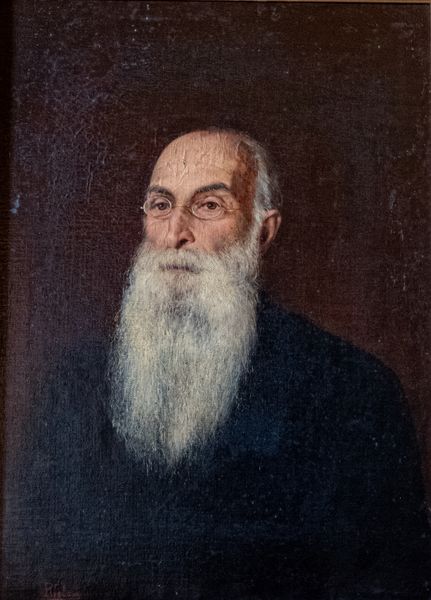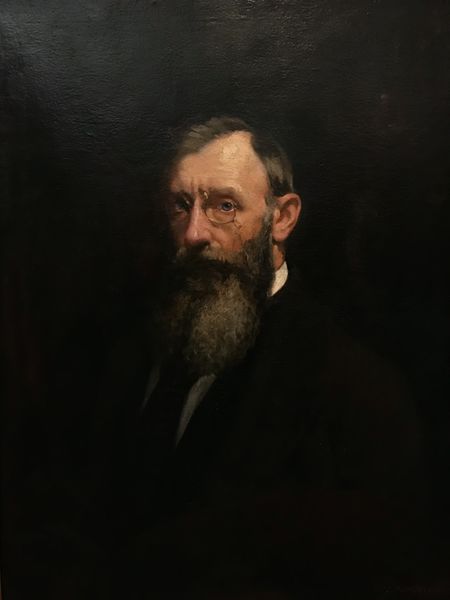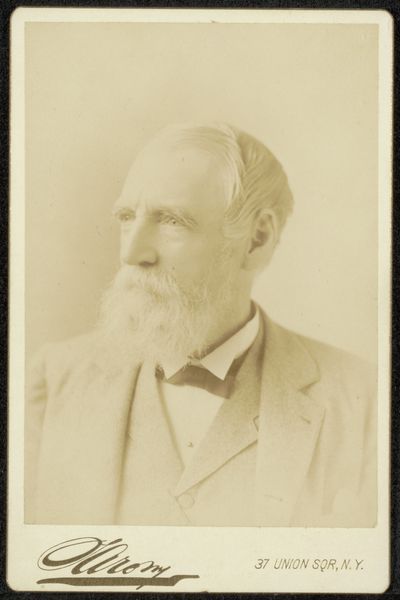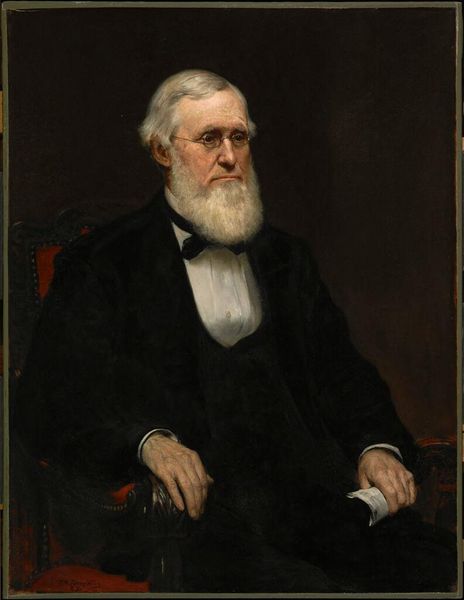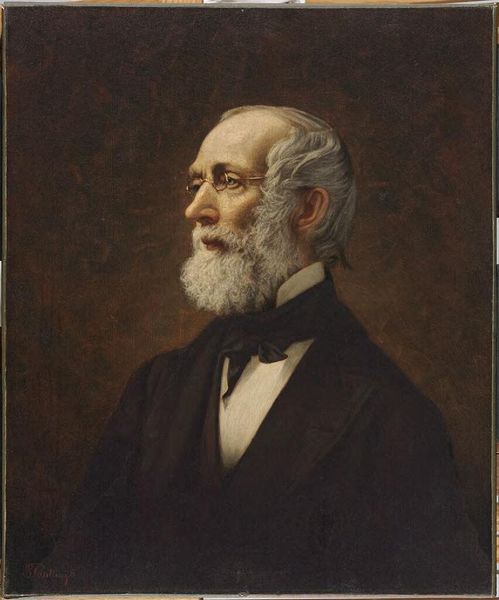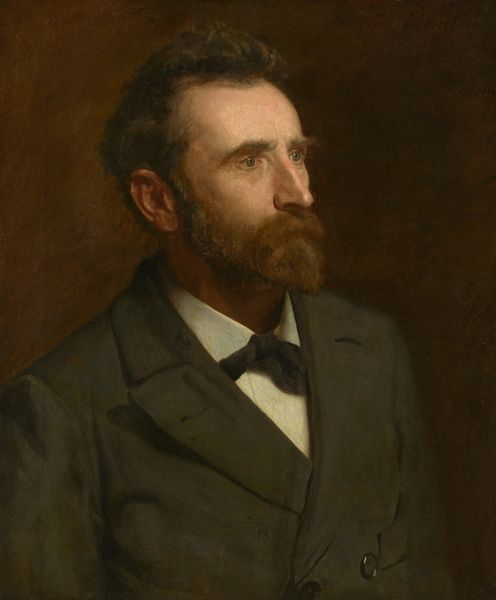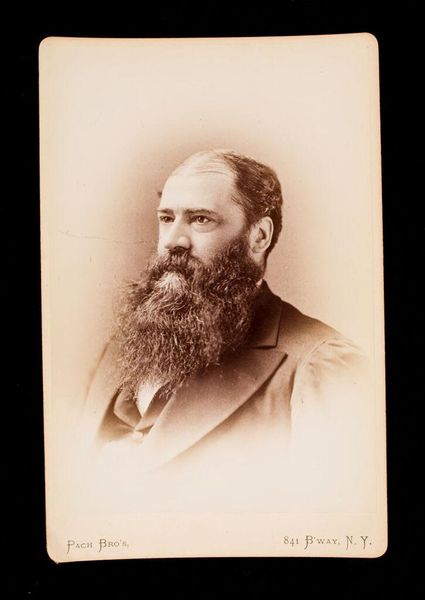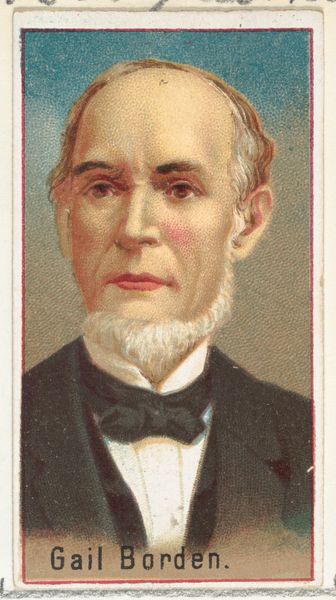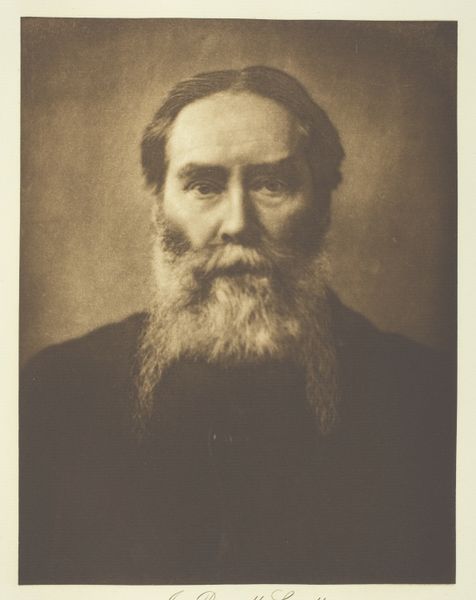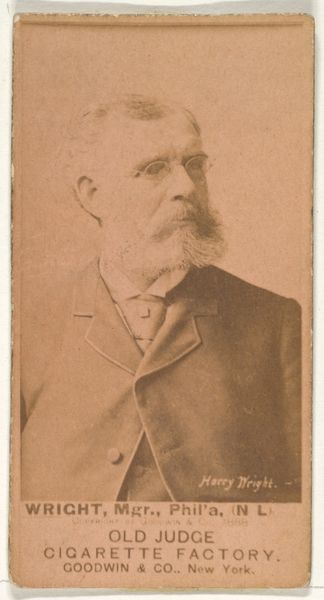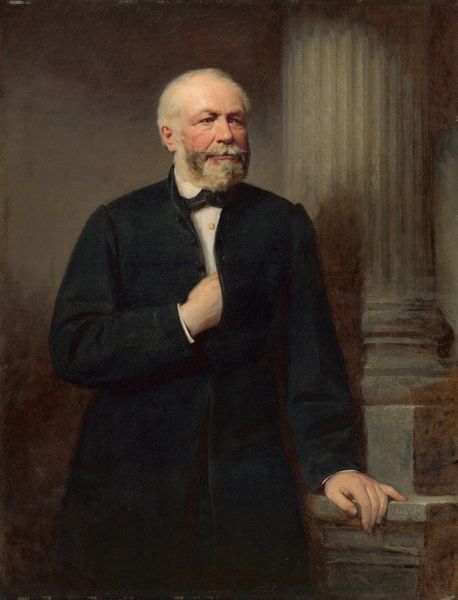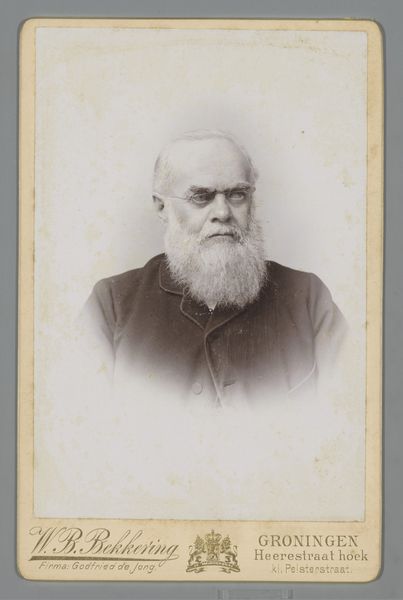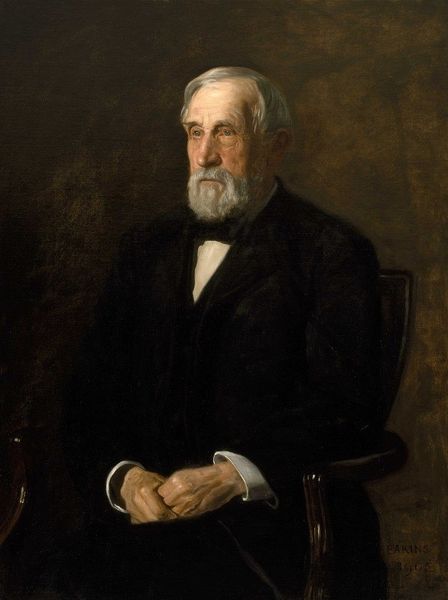
painting, oil-paint
#
portrait
#
portrait image
#
painting
#
oil-paint
#
portrait drawing
#
facial portrait
#
academic-art
#
portrait art
#
fine art portrait
#
realism
Copyright: Public domain
Curator: Pasquale Celommi's oil painting, titled "Ritratto Di Vincenzo Pompizii," presents us with a dignified gentleman. The somber palette really sets the tone. What is your initial impression? Editor: It strikes me as an almost defiant portrait. He seems burdened, though also steadfast, unflinching even. There's an implied stoicism that piques my interest immediately. Curator: The artist employs a rather realistic, almost academic approach. Note the minute details in the face, each wrinkle telling its own silent story. And the rendering of light across his forehead is rather effective, creating a strong focal point. Editor: But let's think about who is portrayed. Older men are traditionally figures of authority, wisdom and control. Considering this work, the composition reflects the societal bias toward the perceived importance and social standing of white men. Is the unflinching gaze communicating genuine determination or simply a mask of privilege? Curator: I see your point. Though if we remove the subject matter, focusing purely on form, the painting offers a masterclass in light and shadow, note how the blacks and browns coalesce to direct our eyes up the figure to his face and hands. There’s an almost sculptural quality. Editor: Precisely. Consider too what it omits. What were Pompizii's social contributions? Did he help advance progress, justice, or freedom in any way, shape, or form? As cultural stewards, don't we also have a duty to interrogate the uncritical canonization of such portraits? Curator: The materiality itself commands our attention. Notice the impasto technique employed, adding texture that enhances the overall dimensionality of the subject's form. Editor: The composition feels intentionally straightforward. The color palette may need greater nuance for current dialogues around societal biases. It’s this directness that demands reflection. Curator: Indeed. Art has always sparked necessary conversations, offering us pathways to see the world—and our place in it—with new eyes. Editor: A world where more voices and narratives can begin to balance such conventional imagery, both in and outside the museum's walls.
Comments
No comments
Be the first to comment and join the conversation on the ultimate creative platform.
